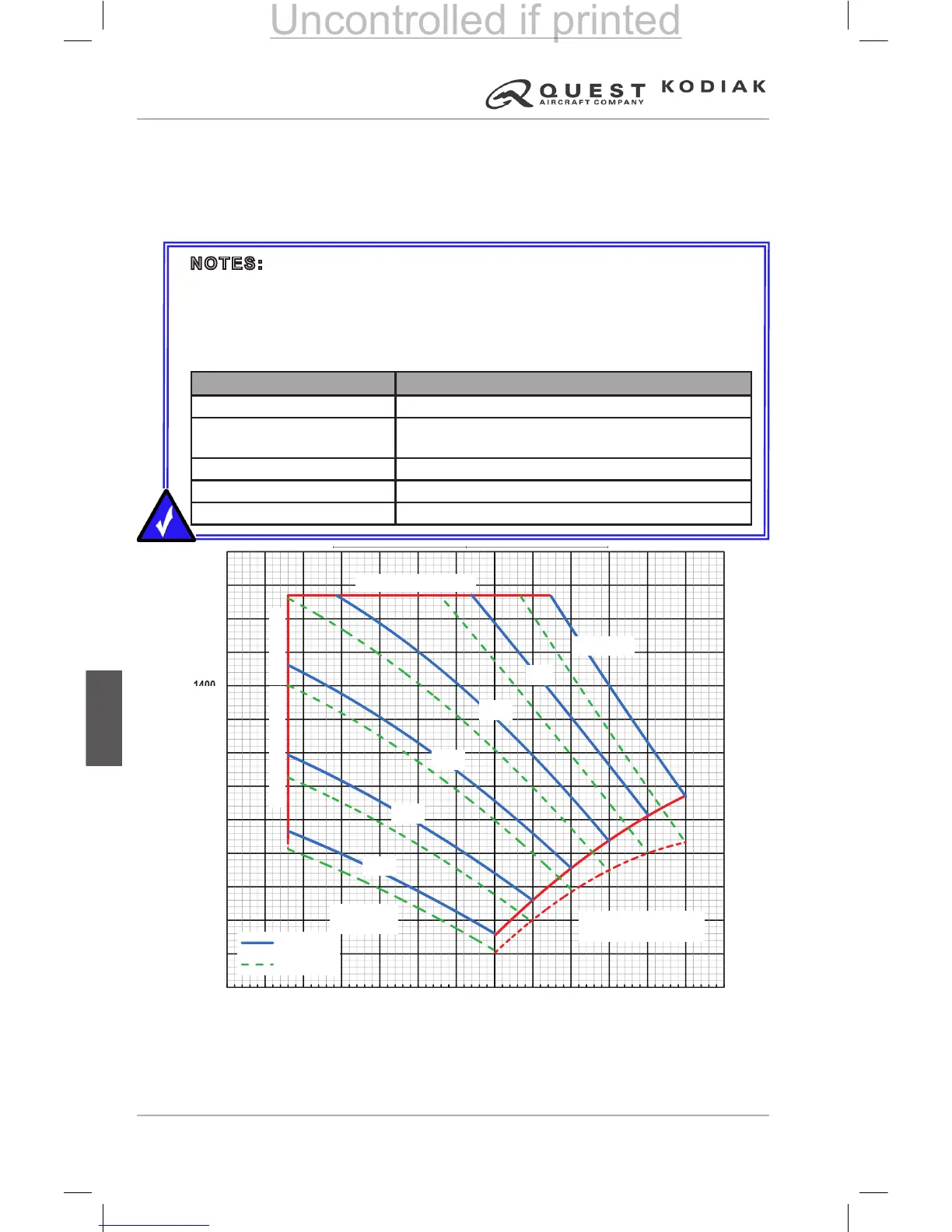Pilot’s Operating Handbook
5-12
DO NOT USE FOR FLIGHT OPERATIONS
Section 5
PERFORMANCE
100 SERIES
Performance
MAXIMUM ENGINE TORQUE FOR CLIMB
Conditions:
• 2200 RPM • 101 KIAS
• Inertial Separator – Normal (Solid BLUE Line), BYPASS (Dashed
GREEN Line)
Figure 5-3 – Maximum Engine Torque for Climb*
* An alternate method, in lieu of using this chart, is to maintain power at or below
maximum continuous. (All engine gages in green arc.)
NOTES:
• Torque shall be achieved without exceeding 765°C ITT or 101.6%
.
• When climb performance is not critical, use of an initial climb ITT setting
of 740°C is recommended if torque and
limits are also observed.
• With the climb power setting specied below the 1670 LB FT limit,
decrease the climb torque setting for each system as follows:
Condition Power Reduction
Inertial Separator in BYPASS Sea Level: 140 FT-LB / Higher Altitudes: See Below
Bleed Air Heat ON
Below 15,000 FT: 40 FT-LB
15,000 FT or Above: 60 FT-LB
Pitot or Stall Heat ON 10 FT-LB
Electric Cabin Heat ON 20 FT-LB
Air Conditioning ON 80 FT-LB
1500
1600
1700
1800
MAXIMUM ENGINE TORQUE FOR CLIMB
CONDITIONS:
2200 RPM
101 KIAS
Inertial Separator - Normal (Solid Blue Line); Bypass (Dashed Orange line)
NOTES:
1. Torque on this chart shall be achieved without exceeding 765°C ITT or 101.6% N
g
.
2. For pilot convenience, use of an initial climb ITT setting of 740°C when climb performance is not critical is
recommended if torque and N
g
limits are also observed.
3. With the climb power setting specified below the 1670 lbft limit, decrease the climb torque setting for
each system as follows:
TORQUE LIMIT, 1670 LBFT
SEA LEVEL
5000
ERATURE, -54°C
18D
500
600
700
800
900
1000
1100
1200
1300
-70-60 -50-40 -30-20 -100 10 20 30 40 50 60
TORQUE -lbft
OUTSIDE AIR TEMPERATURE -°C
IPS NORMAL
IPS BYPASS
CMG, 04/08/10
MAXIMUM APPROVED
TEMPERATURE, ISA + 35°C
PRESSURE
ALTITUDE -FT
25000
10000
15000
20000
MINIMUM APPROVED TEM
